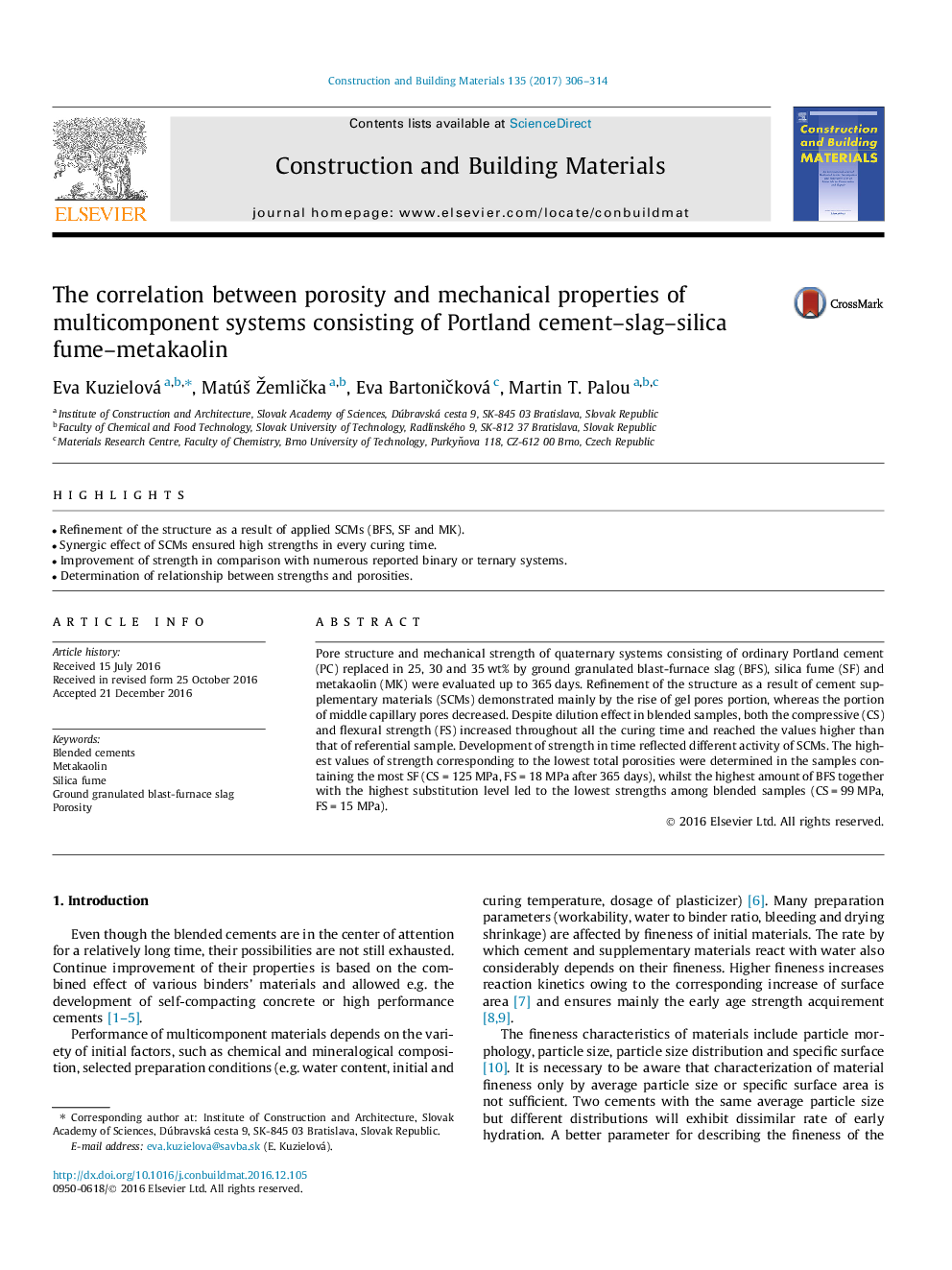| Article ID | Journal | Published Year | Pages | File Type |
|---|---|---|---|---|
| 4913567 | Construction and Building Materials | 2017 | 9 Pages |
Abstract
Pore structure and mechanical strength of quaternary systems consisting of ordinary Portland cement (PC) replaced in 25, 30 and 35Â wt% by ground granulated blast-furnace slag (BFS), silica fume (SF) and metakaolin (MK) were evaluated up to 365Â days. Refinement of the structure as a result of cement supplementary materials (SCMs) demonstrated mainly by the rise of gel pores portion, whereas the portion of middle capillary pores decreased. Despite dilution effect in blended samples, both the compressive (CS) and flexural strength (FS) increased throughout all the curing time and reached the values higher than that of referential sample. Development of strength in time reflected different activity of SCMs. The highest values of strength corresponding to the lowest total porosities were determined in the samples containing the most SF (CSÂ =Â 125Â MPa, FSÂ =Â 18Â MPa after 365Â days), whilst the highest amount of BFS together with the highest substitution level led to the lowest strengths among blended samples (CSÂ =Â 99Â MPa, FSÂ =Â 15Â MPa).
Related Topics
Physical Sciences and Engineering
Engineering
Civil and Structural Engineering
Authors
Eva Kuzielová, MatúÅ¡ ŽemliÄka, Eva BartoniÄková, Martin T. Palou,
